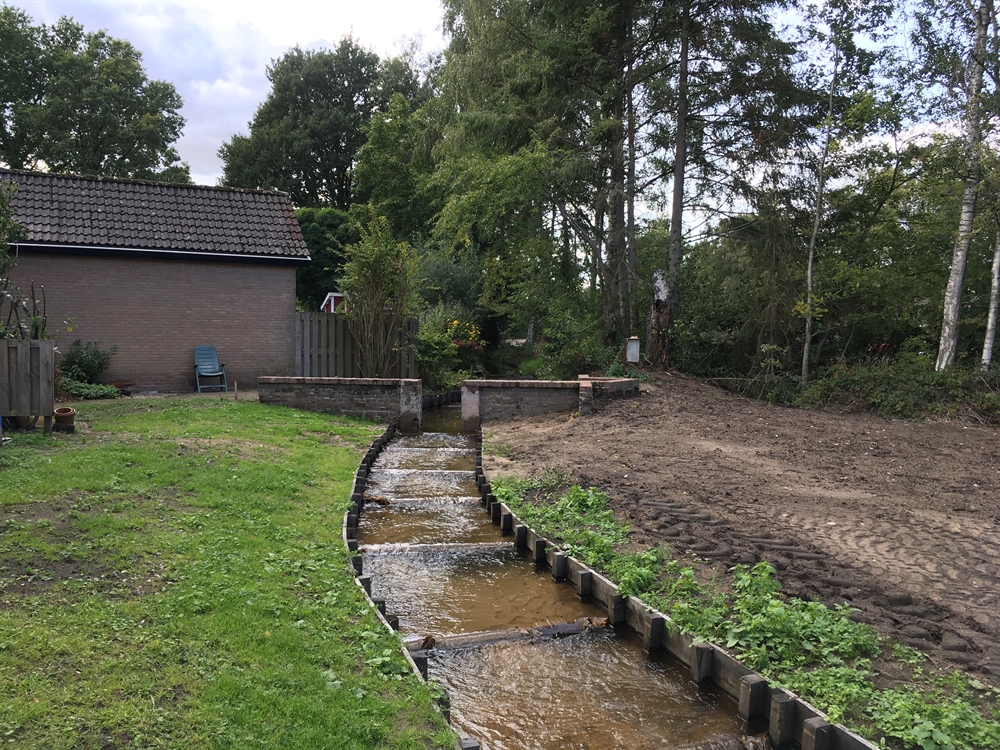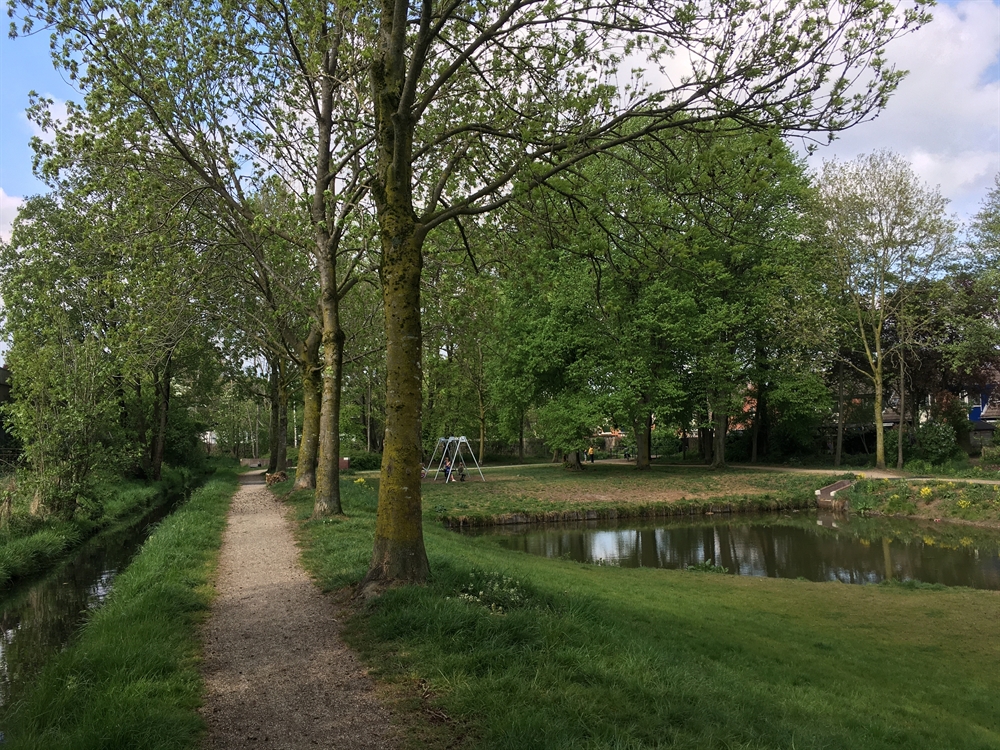More room for water with the restored Ugchelsebeek brook in Apeldoorn
The Ugchelsebeek is an historic brook of significant ecological value. This brook runs through the municipality of Apeldoorn. The municipality of Apeldoorn and the Vallei en Veluwe district water board are working on the restoration of fourteen brooks and recently restored the northern section of the Ugchelsebeek in the city.
Why has the brook been restored?
The restoration was prompted by climate change. With the brook, the municipality and the district water board intend to create more room for excess groundwater and torrential rain, and to provide a solution to the increasing drought. Other goals are enhancing spatial quality, creating room for leisure activities and the perception of cultural-historical values, and improving human and animal habitats. The restored brook will also improve the habitats of rare animal species, such as the brook lamprey and the kingfisher.

How does the brook help to combat waterlogging, heat, and drought?
Sections of the brook that used to run underground now run above ground, and the brooks are now more closely interconnected. In addition, an ample water storage basin has been created, providing more room for rainwater from disconnected downspouts and excess groundwater. Furthermore, it enables prolonged water retention for periods of drought. The brook, once constructed for industrial purposes, has largely been sheet-piled again. Along the brook, the municipality has planted strips of trees and vegetation, which provide a shady and cooling effect along the brook. Residents bordering the brook have helped to pick out the indigenous trees and plants.

What else does the brook do?
With the brook, the municipality also aims to enhance biodiversity, create more room for leisure activities, and restore cultural-historical values:
- Biodiversity: the tail profile of the brook has been narrowed to ensure sufficient current velocity for the habitat of the rare brook lamprey. In addition, the municipality has constructed fish ladders enabling the fish to swim upstream, thus enlarging their habitat. For example, brook lamprey can thus reach more spawning areas to lay their eggs. This also benefits other species.
- Leisure activities: some paths run parallel to the brook, while other paths cross the brook. They invite strolling and cycling amidst the well-shaded greenery. Residents and visitors can thus enjoy the flowing water and experience the historic genesis of Apeldoorn;
- Cultural history: by way of reference to the industrial nature of the Ugchelsebeek, retaining walls near separation structures and hydraulic drops at old mill locations have been restored.
Special features
Due to their cultural-historic and industrial nature, the Apeldoorn brooks feature an austere design. Remarkably, the realisation of natural brook processes such as transport, sedimentation, and meandering has turned out to be possible, nonetheless. Another special feature is the involvement of residents and interest groups in the planning, launch, and completion of the project. In some cases, they have also been involved in management and maintenance: most maintenance is carried out by machines, but at several vulnerable locations volunteers assist in carrying out manual maintenance. Children are also involved in these efforts, who thus become acquainted with the brooks and the corresponding natural environment.

Lessons to be learned
To garner support for climate adaptation, it is important to continuously emphasise the goals of a project in the communications with residents and other stakeholders. Showing what abstract goals within the project will look like in concrete terms will make it easier to propagate the urgency of climate adaptation and its translation into measures among residents. Then it will also be easier to ask residents how they will be contributing to climate adaptation themselves.
Contact person
Hendrieke Rossingh
Gemeente Apeldoorn
H.Rossingh@apeldoorn.nl
